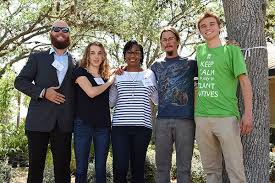Landscaping with larval host wildflowers and ground covers in Florida is an excellent way to support local ecosystems and promote biodiversity, especially for butterflies, moths, and other pollinators. Many butterflies and moths lay their eggs on specific host plants, and the larvae (caterpillars) feed exclusively on these plants. By incorporating these host plants into your landscape, you can attract and sustain butterfly and moth populations.
Here are some larval host wildflowers and ground covers that are suitable for Florida’s climate:
- Milkweed (Asclepias spp.): Milkweed is the primary host plant for Monarch butterflies. Several species of milkweed are native to Florida, such as the Swamp Milkweed (Asclepias incarnata) and the Butterfly Milkweed (Asclepias tuberosa).
- Passionvine (Passiflora spp.): The Gulf Fritillary and Zebra Longwing butterflies lay their eggs on passionvines. Our native Florida species include the Corkystem Passionvine (Passiflora suberosa) and the Maypop Passionvine (Passiflora incarnata).
- Goldenrod (Solidago spp.): Goldenrods are a native keystone species meaning their presence is required for a healthy ecosystem. They are host to over 100 species of moth and butterflies playing a crucial role in Florida. Consider the Seaside Goldenrod (Solidago sempervirens) or the Chapmans Goldenrod (Solidago odora var. chapmanii).
- Senna (Senna spp.): The Cloudless Sulphur and Sleepy Orange butterflies lay their eggs on Senna plants. Floridas native sennas include Partidge Pea (Chamaecrista fasciculata), Privet Cassia (Senna ligustrina), and Bahama Cassia (Cassia bahamensis).
- Blackberry (Rubus sp.): The blackberry is another keystone species hosting almost 130 species of caterpillar. It also doubles as a delicious source of fruit!
- Asters (Symphyotrichum spp.): The aster family is a large group of over 100 species mostly endemic to North America and fill a huge role as a keystone species. They are a host to about 100 species of moth and butterflies and can be found in almost every type of ecosystem. They are especially known for their beautiful flowers.
- Matchweed/Frogfruit (Phyla nodiflora): The matchweed is a great groundcover to mix in with other groundcovers and turf or as a stand alone specimen. They are a host to the peacock butterflies which can be seen fluttering around among the matchweed in large numbers in spring.
When incorporating larval host wildflowers into your landscape, consider planting them in sunny areas where butterflies are more active. You can also create butterfly gardens or specific sections in your garden dedicated to these host plants. Adding other nectar-rich flowers will attract adult butterflies, providing both food and breeding grounds for these beautiful insects.
When selecting plants for your Florida landscape, try to prioritize native species as they are more adapted to the local environment and will support a broader range of native wildlife, including butterflies.
Before planting, check with local nurseries, botanic gardens, or extension offices to ensure you choose the most appropriate species for your specific region in Florida. Additionally, avoid using pesticides that may harm butterflies and caterpillars, and aim to create a welcoming and pesticide-free environment for these important pollinators.

